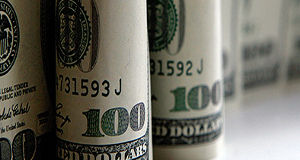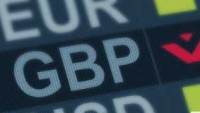 OPEC cuts, but oil can’t stay afloat
OPEC cuts, but oil can’t stay afloat
The world’s biggest oil producers finalized a historic deal to cut their production over the weekend, in an attempt to stabilize a market that has been ravaged by collapsing demand. After a few hiccups with Mexico, OPEC and its allies agreed to cut supply by 9.7 million barrels a day from current levels.
As is usually the case with OPEC, there were some ‘shenanigans’ involved with reaching a number that high. Both Saudi Arabia and Russia have drastically ramped up their production in recent weeks, so by calculating the cuts from today’s levels, the final number has been inflated by ~2.5 million barrels. In other words, if this cut had been computed from January-February output levels, it would only amount to ~7 million barrels.
Either way though, the sheer size of these cuts is nowhere near enough to stabilize the market, which has been decimated by a breakdown in demand. Estimates suggest this crisis will wipe out 20-30 million barrels in demand per day, so slashing supply by 10 million won’t help that much.
Oil prices opened with a gap higher, but most of those gains quickly evaporated as markets were left disappointed by the size and scope of this deal. Traders might also have doubts about whether everyone will honor this agreement. Compliance has been a huge issue in the past, as there is no real mechanism to guarantee that all these nations will truly stick to their quotas. With the coronavirus stressing government budgets everywhere, the will of key oil producers to honor the deal and cut output, could be under even more pressure than usual.
All told, this deal won’t be the medicine that cures the oil market, but it might be a bandage on the wound. Therefore, even though a healthy rally in oil prices looks unlikely until the demand outlook improves, this could at least help establish a floor under prices for now, perhaps preventing a break below the March lows. For the tide to really turn though, markets may need to see the lockdowns coming to an end, which sadly is still weeks away at best.
Risk aversion creeps back in – have the bears returned?
In the broader market, investors are ‘treading lightly’ to begin the week. Futures point to a 1.5% lower open on Wall Street, while safe havens like gold and the Japanese yen are outperforming in holiday-thinned trading, as most major financial hubs remain closed today.
European virus numbers continue to improve and by most indications the continent is now at or very near ‘peak virus’, with the US likely being a couple of weeks behind. However, it’s becoming clear that reaching the virus crescendo does not automatically translate into a timeline for when an economy will reopen.
Over the weekend, EU Commission chief Ursula von der Leyen advised Europeans not to book their summer holidays yet, because “at the moment no one can make reliable forecasts for July and August”. She added that vulnerable groups may need to stay in isolation until the end of the year, when she hopes a vaccine will be developed.
Hence, the most important question for markets – when do economies reopen – remains a riddle. Beyond that, investors may be downplaying how long it will take for economies to recover. The speed of job losses in the US is simply mind-bending, and something similar is probably true in Europe. Those could take years to come back, arguing for a long and protracted recovery, especially when considering the scars this crisis will leave on consumer behavior.
Perhaps the earnings season that commences today and the gloomy – but sobering – guidance by executives will drive that point home. Look out for comments by Delta Air Lines today.

Origin: XM













